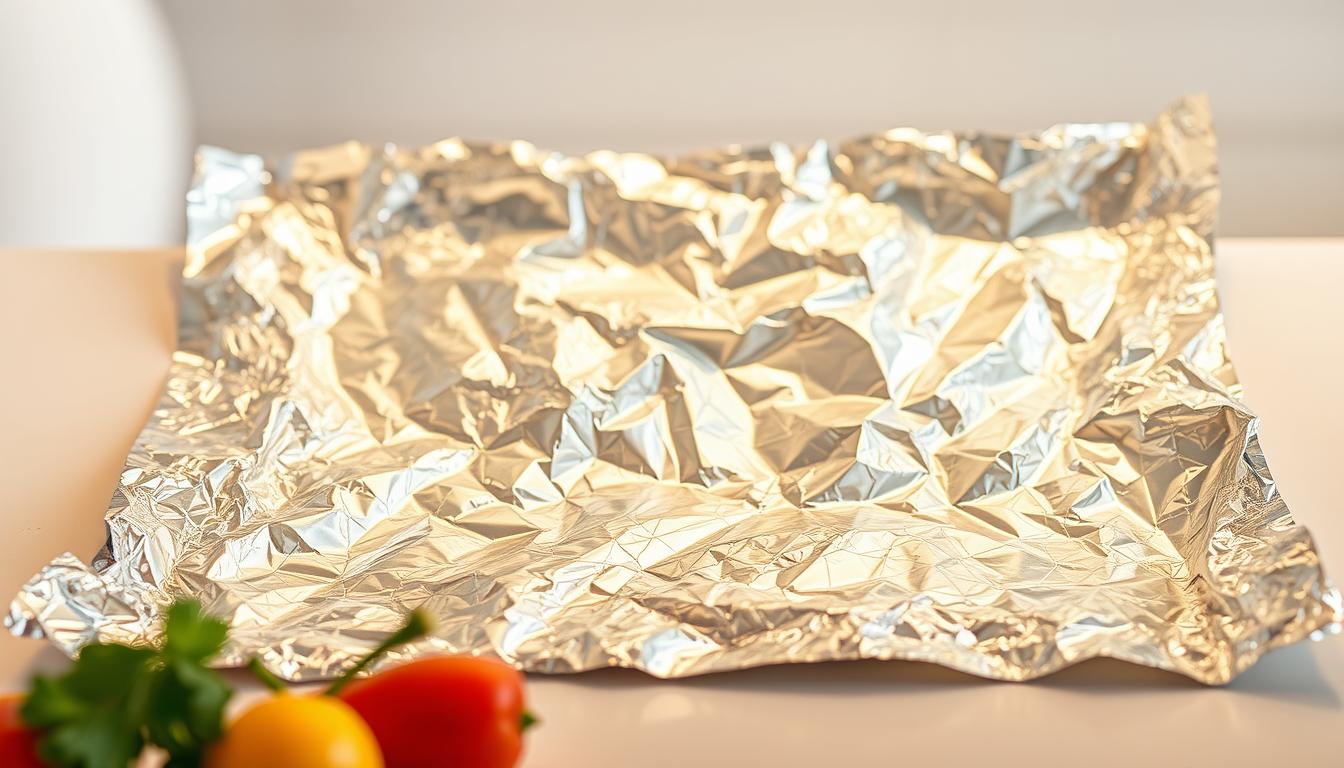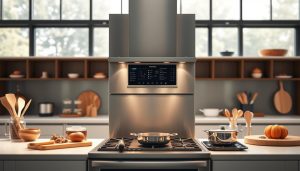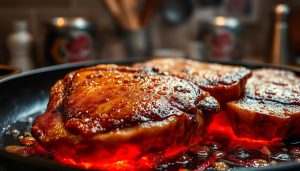Over 75% of U.S. households use this versatile kitchen staple weekly, yet few consider how it interacts with their meals. The thin metal sheets lining your oven or wrapping leftovers might do more than preserve freshness—they could influence your health.
Your cooking habits likely rely on this material for grilling, baking, or storing food. But when heated or exposed to acidic ingredients, trace amounts of metal may transfer into dishes. Research shows this transfer increases with higher temperatures and longer cooking times.
Health organizations disagree on risk levels. The World Health Organization suggests a tolerable weekly intake, while other studies claim typical exposure stays well below harmful thresholds. Your decision hinges on understanding how cooking methods and food types affect metal migration.
Key Takeaways
- Common kitchen tool used in 3 out of 4 American homes
- Heat and acidic foods increase metal transfer potential
- Health experts debate long-term exposure impacts
- Proper usage minimizes risks during meal preparation
- Scientific studies guide safer cooking practices
Understanding Aluminum Foil in the Kitchen
More than just sandwich wrap, this versatile material serves as heat conductor, moisture barrier, and cleaning aid in your culinary toolkit. Manufacturers create it by repeatedly rolling massive aluminum blocks into sheets thinner than a human hair—under 0.2 millimeters thick. This process gives the material its signature flexibility and strength.

From Factory to Pantry Shelf
While industrial sectors rely on thicker grades for insulation and packaging, your kitchen benefits from its lightweight form. Beyond wrapping leftovers, it shapes into makeshift lids for bakeware and protective shields for delicate ingredients. Research shows 65% of home cooks employ it for multiple tasks weekly, from lining grill trays to scrubbing stubborn pan residue.
Everyday Kitchen Solutions
When roasting meats, a tight foil wrap locks in juices better than most containers. Grill masters use crumpled sheets to clean grates without harsh chemicals. Did you know your broccoli and carrots already contain trace amounts of this metal? “Naturally occurring aluminum exists in nearly all produce,” notes food scientist Dr. Ellen Reyes.
Your cooking arsenal gains versatility through proper foil use—whether preserving freshness or simplifying cleanup. Understanding its origins helps you harness its benefits while making informed choices about meal preparation methods.
Assessing the Pros and Cons: Is Aluminum Foil Food-Safe?
Your kitchen drawers likely hold this metallic multitasker that simplifies meal prep and cleanup. Before wrapping another casserole dish, consider how its convenience balances with emerging health discussions.

Benefits and Convenience in Cooking and Food Storage
This kitchen essential keeps roasted chicken moist and prevents delicate fish from sticking to grill grates. Its heat-reflective properties ensure even cooking while protecting bakeware from stubborn stains. Many home chefs rely on it for marinating meats and creating steam pockets for vegetables.
Food safety authorities confirm its practical advantages. The FDA recognizes its safety for typical oven use below 400°F. Unlike plastic wraps, it withstands high heat without melting or releasing harmful fumes.
Potential Health Risks and Concerns with Leaching
Research reveals higher metal transfer occurs when preparing tomato-based sauces or citrus-marinated dishes. A 2021 study found lemon juice increased aluminum migration by 89% compared to neutral foods. “Acidic ingredients act like solvents,” explains materials scientist Dr. Rachel Torres.
While most healthy adults eliminate absorbed metal efficiently, prolonged exposure raises questions. Some neurological studies note elevated metal levels in patients with memory disorders, though causation remains unproven. Current evidence suggests typical household use poses minimal risk, but moderation proves wise.
Your best approach combines this tool’s practical benefits with mindful usage. Avoid high-heat applications with acidic ingredients, and consider parchment paper barriers for long-cooking dishes. Balance convenience with informed choices for safer meal preparation.
Factors Influencing Aluminum Leaching During Cooking
Your cooking methods could be influencing more than just flavor profiles—they might determine how much metal transfers into meals. Three critical elements control this process: heat intensity, ingredient chemistry, and contact duration.
Heat and Chemical Reactions at Play
Roasting at 450°F triples metal migration compared to baking at 350°F, according to Journal of Food Protection research. Acidic ingredients like tomatoes or lemon juice accelerate this process by breaking down the metal’s protective oxide layer. A 2022 study revealed marinating chicken in vinegar for 6 hours increased aluminum content by 137%.
Practical Protection Techniques
Swap foil for glass bakeware when working with citrus or tomato-based dishes. These alternatives prevent chemical reactions while maintaining heat distribution. For grilling, place parchment paper between meat and foil to create a protective barrier.
Key strategies include:
- Keeping oven temperatures below 400°F
- Storing acidic leftovers in glass containers
- Removing foil immediately after cooking
Dr. Lisa Nguyen, food safety researcher, advises: “Two simple rules—lower heat and shorter exposure—can reduce metal transfer by up to 60% in most home kitchens.” Monitor your weekly intake by limiting processed foods, which account for nearly 45% of dietary aluminum exposure according to FDA estimates.
Conclusion
Your kitchen likely relies on this shiny multitasker daily, yet questions about its safety linger. Current evidence confirms typical cooking applications pose minimal health risks when used properly. Most households absorb less than 4% of the recommended weekly aluminum limit through foil exposure, according to recent FDA analyses.
While acidic ingredients and high heat can increase metal transfer, simple adjustments maintain safety. Use glass containers for tomato-based dishes and reserve foil for cooler tasks like wrapping sandwiches. “Moderation matters more than elimination,” advises nutrition expert Dr. Mark Chen.
Your body naturally processes small amounts efficiently—healthy kidneys remove over 95% of dietary aluminum. Focus on reducing processed foods rather than abandoning this kitchen staple. Canned goods and baked goods contribute three times more metal than household foil use.
Balance convenience with smart practices: avoid direct contact with citrus marinades during grilling, and opt for parchment-lined packets when roasting. With mindful cooking habits, you can safely enjoy foil’s versatility without compromising food safety standards.



